Taylor versus regular cantles – see the difference
We are no longer building saddle trees, but we have two videos about how Western saddles fit horses available on our westernsaddlefit.com website.
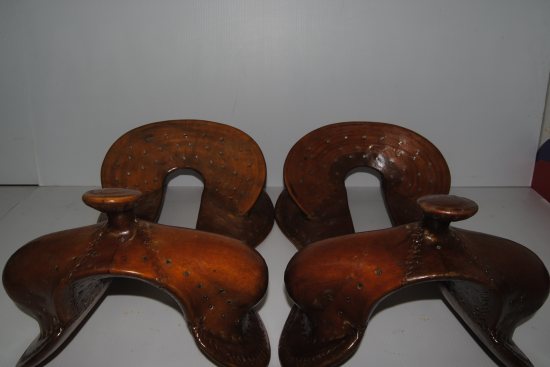
We recently built two trees that were almost identical. Forks, fit and seat length were all the same. The cantles had the same specs too for height and width and angle. But there was a crucial difference - the amount of dish. One tree had 1 ½” of dish. One had ¾” dish. And that difference changed the cantle from a “regular” to a “Taylor”, which affects the look of the cantle, the slope of the dish, the slope of the back of the cantle, the angle of the cantle cut on the bars, and even the bar length. All for ¾” of an inch of dish… Here are pictures of what I mean.
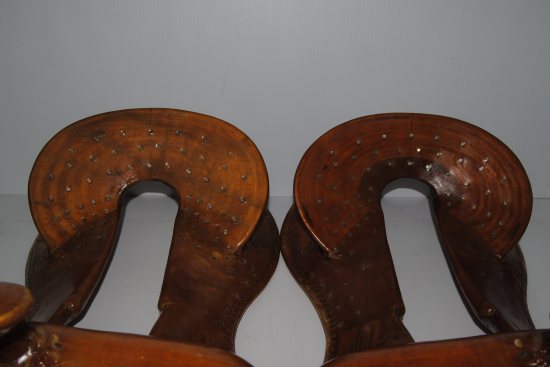
First off, why do we have to have the two types? Because you cannot physically get more than about 1” of dish from a Taylor cantle with the angles used there. And you cannot physically get less than an inch of dish from a regular cantle with the angles used there. (Where that dividing line actually is between Taylor and regular depends on the cantle angle as well.) It all comes down to geometry - but please don’t ask us to explain it mathematically…
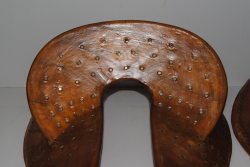 |
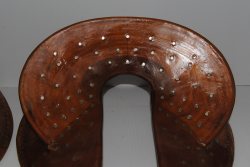 |
First thing to see is the difference in the look of the cantle. Both these cantles are 4” high, 13” wide, at 37.5 degrees. (See the Cantle Conundrums page to learn more about the degrees – that they are just a name to use since it is an un-measurable measurement on the cantle itself.) The one on the right is the regular cantle with 1 ½” of dish in it. The one on the left is the Taylor cantle with ¾” of dish.
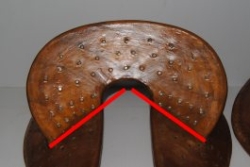 |
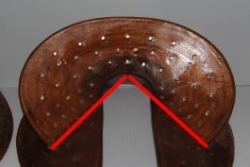 |
So why do they look so different? Primarily because the angle at the seat blend is different between the two types. This change happens both on the bars (the angle of the cantle cut changes) and on the cantle. The regular angle is narrower and the Taylor angle is wider. Basically what you are doing is moving the cantle gullet forward while keeping the cantle points in the same place, and this means the angle has to change.
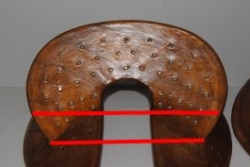 |
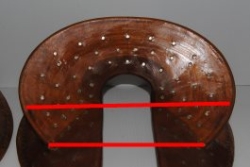 |
This makes the distance between a horizontal line drawn across the bottom of the cantle gullet and the points of the cantle less on a Taylor than on a regular. The amount of cantle above that horizontal line is a lot more on a Taylor than on a regular for the same height of cantle. And that is what really changes the look of the cantle. We still make them as round as possible given the dimensions ordered, but that look is still different.
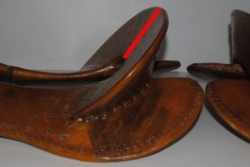 |
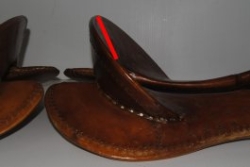 |
The next thing that changes is the slope of the face of the cantle. These trees have the same cantle angle (the angle of the rim relative to the table). But the angle of the dish face relative to the table is very different due to the different amounts of dish. This makes the Taylor cantle look much more laid back, even though the cantle angle is identical. And that slope on the face of the cantle will affect how the ground seat goes in. (Sorry, I didn’t get the whole face of the regular cantle in the picture, but I think you can get the idea.)
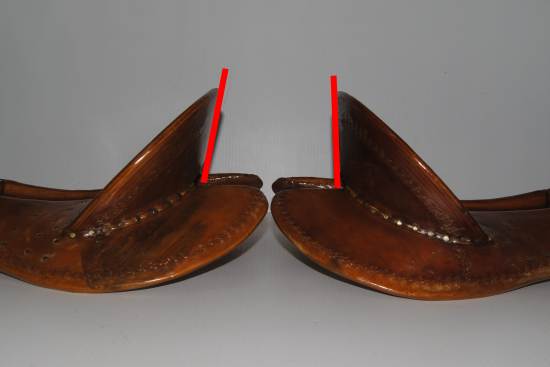
This also affects the slope of the back of the cantle. This Taylor cantle has a lot more back slope than the regular cantle does, which also makes the Taylor look more laid back than the regular. The back slope is not measured against anything. It is set so that there is enough wood left at the cantle gullet for strength. While you might think that the tree with the straighter back would have the thicker cantle…
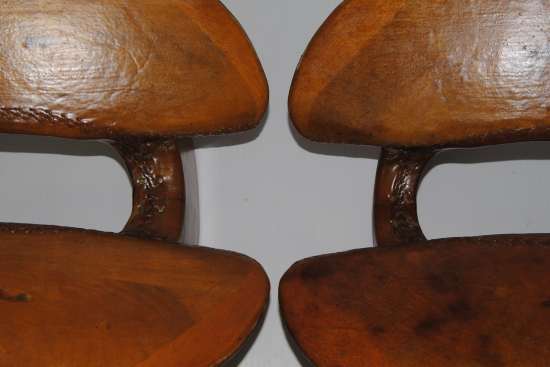
it ain't so. The thick one on the left is the Taylor. The thinner one on the right is the regular with the straighter back. Why? When you take more wood out of the front (¾” deeper dish in this case) you need to leave more at the back for strength, which results in a straighter back slope on the cantle.
So, how does this relate to other maker’s trees? When we discuss Taylor versus regular cantles, the names are not set in stone. Taylor is name given by Julian Tubb, the maker who taught Rod to build trees, to him for the shallow dish cantle. And they do look more like the old time cantles often built by the Taylor brothers way back when. So that is what we call them, but not all tree makers use this terminology. I’m sure they don’t use the same angles. In fact, the way cantles are put on the bars – the angle of the cantle cut on the bars, the angle used on the cantle and the distances below and above the horizontal line at the bottom of the cantle gullet - could very well be the most variable thing between makers. But hopefully in seeing the changes in the two types we make, you will be able to look at other maker’s trees with a more educated eye to see how they have done it differently.
More questions about cantles? Check out our Cantles Conundrums page, or ask them in the comments section below. I’ll try to answer as best as I can.
